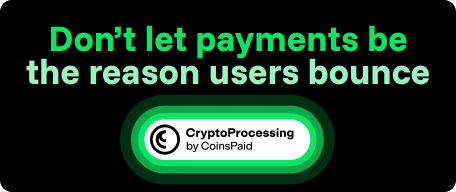Trump’s 401(k) Revolution Could Supercharge Digital and Tokenized Assets

President Donald Trump’s latest executive order could be the most consequential policy shift for alternative investments since the creation of the 401(k) itself. On August 7, he signed a directive that instructs the Labor Department and the Securities and Exchange Commission to open the gates for private equity, real estate, cryptocurrencies, and, by extension, tokenized assets to be included in mainstream retirement plans.
If carried through, it could spark a new era in American retirement investing, one in which digital and blockchain-based products are not exotic outliers but integrated parts of long-term portfolios.
From Caution to Inclusion
Until now, the $8 trillion 401(k) market has been largely closed to digital assets. The prior administration’s Labor Department discouraged crypto in retirement accounts, warning of volatility and regulatory uncertainty. Tokenized assets, digital representations of traditional investments such as U.S. Treasurys, corporate debt, or even real estate, were barely on the radar.
The new order changes all that. Within 180 days, the DOL must reassess fiduciary guidance under ERISA, potentially creating a path for plan sponsors to offer diversified funds that include cryptocurrencies and tokenized assets. The SEC is tasked with updating its own rules to make these products more accessible, possibly revisiting the definitions of accredited investors and qualified purchasers.
A Massive Capital Unlock
The opportunity is staggering. 90 million Americans contribute to 401(k) plans. Even a 1% allocation to digital assets and tokenized securities could direct tens of billions of dollars into the sector. The 401(k) capital pool is steady, long-term, and tax-advantaged, the exact opposite of the fast-money flows that have dominated crypto markets.
Tokenized products could be among the biggest beneficiaries. U.S. Treasurys, money-market funds, and commercial real estate are already being tokenized on public blockchains by firms like Franklin Templeton, BlackRock, and Ondo Finance. Adding these yield-bearing, blockchain-native instruments to retirement accounts could provide the diversification and transparency fiduciaries seek while giving savers exposure to innovation.
From Speculation to Institutionalization
For digital assets, this is the long-awaited bridge to mainstream finance. Retirement plans demand institutional-grade custody, audited performance, and transparent governance standards that will accelerate the maturation of the industry.
The executive order also points to the possibility of safe harbor provisions: clear guidelines that, if followed, shield plan sponsors from litigation risk. That alone could open the floodgates for cautious employers to adopt blockchain-based investments.
The Tokenized Future of Retirement
Imagine a target-date retirement fund that holds a mix of stocks, bonds, private equity, spot Bitcoin, and tokenized Treasury bills — rebalanced automatically, with instant settlement and on-chain transparency. That vision is no longer science fiction; it is now a regulatory possibility.
Such a shift could help solve some of the structural challenges of retirement investing: limited diversification options, liquidity mismatches, and opaque fee structures. Tokenized assets can offer fractional ownership, faster settlement, and potentially lower costs, benefits that accrue directly to savers.
Chart: Potential 401(k) Capital Flows into Digital & Tokenized Assets
The chart estimates potential inflows into blockchain-based investments if U.S. 401(k) plans allocated between 0.5% and 10% of their assets under the new policy framework. With roughly $8 trillion in defined-contribution assets, even a 0.5% allocation equals $40 billion in capital flows. A 1% allocation doubles that to $80 billion, while a 5% allocation implies about $400 billion in long-term capital. The most aggressive scenario — 10% allocation — would direct $800 billion into the sector, an amount that could transform market liquidity and accelerate adoption of both cryptocurrencies and tokenized securities.
The Road Ahead
Much will depend on the follow-through from regulators. If the DOL and SEC craft clear, workable rules, and if the industry responds with products that meet fiduciary tests, this executive order could stand as the moment digital and tokenized assets gained their place in the American retirement canon.
The stakes are high. Success would not only diversify retirement portfolios but also cement the U.S. as the global leader in blockchain-enabled finance. Failure would leave trillions in potential capital flows untapped.
For now, the door is open. And for the digital asset and tokenization industries, the opportunity is nothing short of generational.











